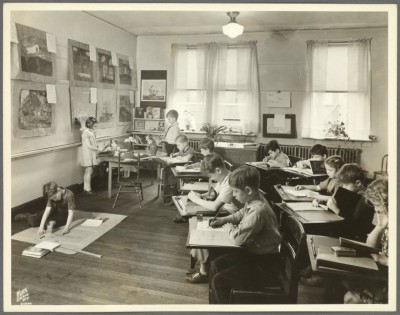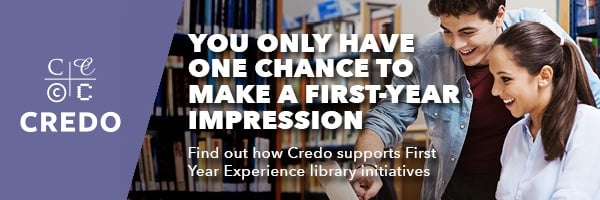 Raymond Pun is the first year student success librarian at California State University, Fresno. In the coming months, he will bring his unique perspective to a series of posts for the Credo Blog as our First Year Experience Correspondent. Stay tuned for more FYE insights from Raymond, and join him on March 8th for his webinar, The First Year Library Experience: Best Practices and New Directions.
Raymond Pun is the first year student success librarian at California State University, Fresno. In the coming months, he will bring his unique perspective to a series of posts for the Credo Blog as our First Year Experience Correspondent. Stay tuned for more FYE insights from Raymond, and join him on March 8th for his webinar, The First Year Library Experience: Best Practices and New Directions.
Today, more and more academic libraries are strategizing their support for the first-year experience in their campuses. One area the Association of American Colleges and Universities (AAC&U) identifies as a high impact practice is “first-year seminars and experiences.” A growing number of schools are creating special programs for first-year students, especially those that are first-generation college students to improve their transition and retention. These efforts often integrate multidisciplinary skills and fields including intensive writing courses, information literacy and learning communities in the first-year seminar. As a result, information literacy is becoming more vital in the first-year experience as these students enter the academic journey.
It’s no secret that academic libraries have a great advantage in supporting the first-year curriculum through information literacy. From creating and promoting digital resources to research services to information literacy workshops, librarians can lead the way as campus collaborators and leaders to support the first-year experience as more students are becoming digital natives and mass consumers of digital information and mobile apps.
As someone who has worked closely with first-year students for several years, I often seize the opportunity to engage with them through active learning techniques in class. Here are two of my favorite methods that you may consider:
 Cephalonian Method: Named after a tourist destination in Greece, this method encourages students to participate in an interactive presentation that utilizes visual aids. In this method, librarians prepare questions in advance and give them to selected students. Printed in a card or paper, one side will have a question and the other side will have a picture. During the presentation, when the image appears, the student with that same image will be asked to read the question for the instructor to answer. (Example: where can I find scholarly articles on global warming?) This process allows participants to listen to other peers and stay attentive. You can use all kinds of images that might attract first-year students such as memes to gifs too!
Cephalonian Method: Named after a tourist destination in Greece, this method encourages students to participate in an interactive presentation that utilizes visual aids. In this method, librarians prepare questions in advance and give them to selected students. Printed in a card or paper, one side will have a question and the other side will have a picture. During the presentation, when the image appears, the student with that same image will be asked to read the question for the instructor to answer. (Example: where can I find scholarly articles on global warming?) This process allows participants to listen to other peers and stay attentive. You can use all kinds of images that might attract first-year students such as memes to gifs too!- One Minute Note Method: Would you like to know what your students are thinking about in a library research workshop? This method allows students to think about selected questions or ideas anonymously. Librarians can ask a question that may have many different results. (Example: What are peer-reviewed articles?) By handing out blank notes for students, they can write their answers in one minute. After a minute, students are required to pass their notes to another student a few times to randomize the responses and make them anonymous. You can call on students to read the notes out loud. Most will end read it because it is not their own thoughts or ideas. This kind of reflection and sharing can be useful when you want to engage with students in the beginning.
Even if you find the high impact practices to be a bit daunting, you can still apply these teaching techniques to engage with your students in your workshops. Hopefully these methods can spark some creative ideas to teach information literacy to your first-year students, and to distract them from their devices!
Here are some more resources you may want to explore on how academic libraries can support the first-year experience program.
Join Raymond and Meggan Houlihan, First Year Experience and Instruction Librarian at New York University, Abu Dhabi, for their free live webinar, The First Year Library Experience: Best Practices and New Directions, March 8th, 2:00 PM EST. And check out their book, The First-Year Experience Cookbook, available now!

